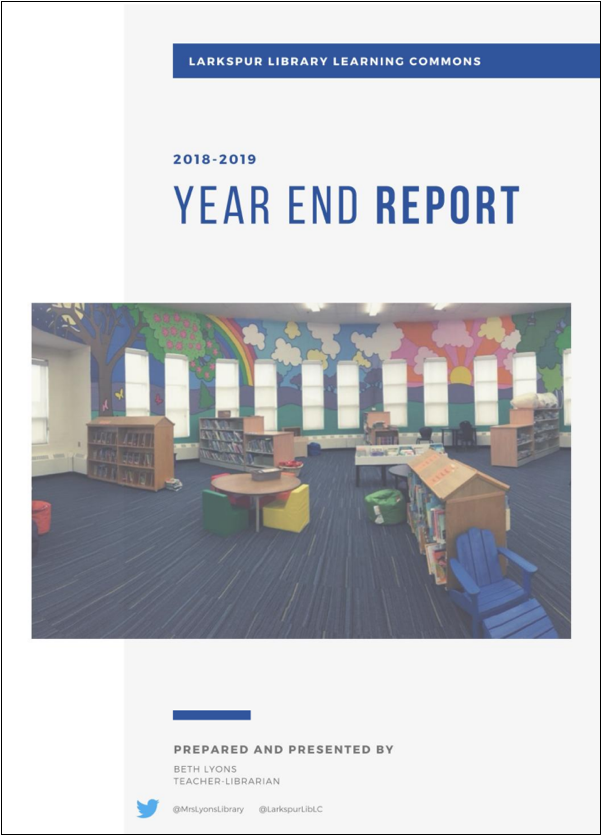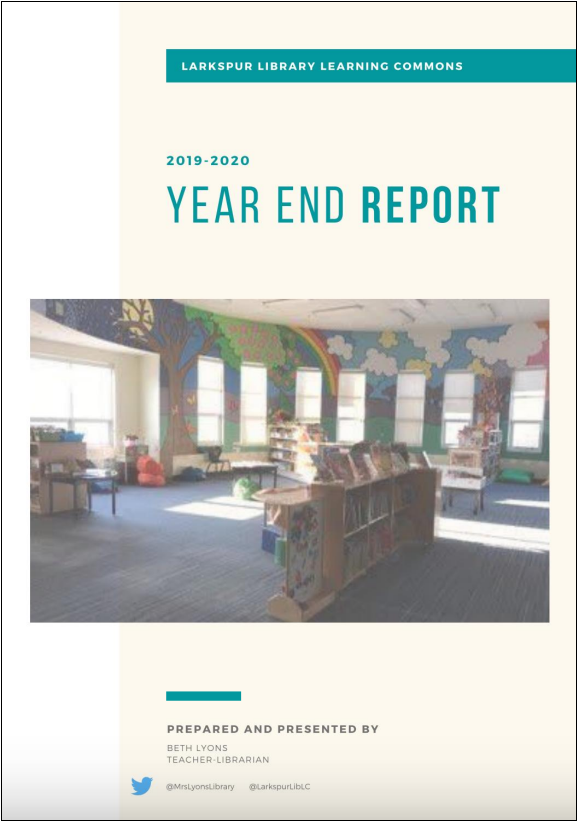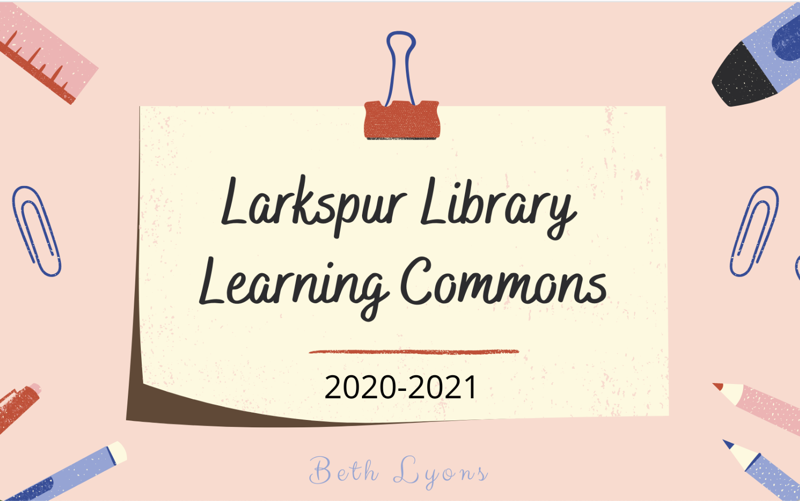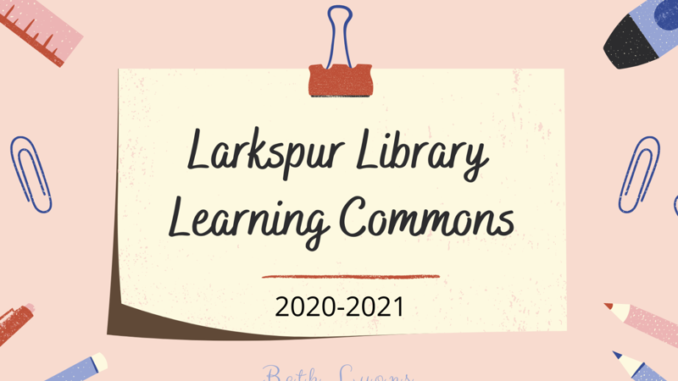
By Beth Lyons
Looking Back on 2019-2020
The physical library space is still closed. It has been closed to educators and students from the beginning of the emergency pivot to distance learning in March and remains closed now that we have started the 2020-2021 school year. However, I am one of the privileged teacher-librarians that remains in my role and able to support the school community in a variety of ways. I will be honest and tell you that I dislike being in the physical library space most days. It is quiet, empty and devoid of human connections. It is everything I don’t believe about school libraries. The maker materials remain still and unused. The books are neatly lined up on their shelves all in their proper place with no evidence of young children having browsed through them. I think the space itself misses the students.
In a year where the word “unprecedented” is thrown around by every newscaster, journalist and politician I hate to use a cliché, but what other word is there? Bizarre? Extraordinary? Unparalleled? Anyway we describe it 2020 has been unusual in so many ways and life in the school library has been very different, to say the least. Over the last two years I have spent considerable time documenting the journey of the library learning commons as an advocacy tool for budget requests, to share with fellow school library professionals, to reflect on the library programs undertaken, and to learn forward. The first year this culminated in a year-end report that was part of an assignment for my Librarian Specialist AQ. Last year I started by creating monthly infographics primarily based on our circulation numbers with some data about collaboration, co-teaching, library events, and programming. The first few infographics for the 2019-2020 school year and my thoughts about the process were shared in this issue of Teaching Librarian. When it came time to curate the data and images for last year’s year end report I was very happy that I had had the forethought to create these infographics so I could easily pull together the circulation data for the time we were using the physical library space.
As I began to build the 2019-2020 year-end report though, I recognized that it would need to reflect the present reality of the school shut down. I decided to split the report into two sections – September to March and April to June. This allowed me to reflect on how the space was used when school was open and how the library programming and my role as the teacher-librarian adapted during the emergency pivot to distance learning. The main focus of my role at the beginning of April was providing tech support to educators and learners. This was done by curating a Google Classroom of resources for staff, creating how-to videos using Screencastify, and working to update our virtual Library Learning Commons (VLLC). I also hosted three weekly live storytimes for classes and families to enjoy a story together, created literacy based inquiry provocations, and a virtual invention convention and maker faire. Images, data and links can be found in my 2019-2020 Year End Report.
Reflecting On Our Current Reality
Now that the 2020-2021 school year has started and so much has changed for all aspects of education, but especially for school libraries here in Ontario, I really want to document and reflect on the ways that both the school library and my role as the teacher-librarian continue to support the learning needs of our community and drive learning forward. Documenting and sharing the library programming is of vital importance this year when so many school libraries have been shuttered and the school library professionals have been reallocated to different roles. We need to look towards the future and have strong advocacy tools and data at our fingertips to ensure that these vibrant spaces are re-opened when safe to do so. Obviously last year’s focus on circulation and genre statistics when creating my monthly infographics will not work for this year, and only looking at one month at a time seem insufficient when so much change is constantly happening in the Ontario education system. In my board we are currently anticipating our third re-organization of the year to take place mid-November. This will result in many educators and students changing from face-to-face teaching to online learning or vice versa. It could result in more split classes, new grade assignments for educators and additional content areas added to an educator’s role. We will undergo another re-organization in January as well. For these reasons, I plan to chunk the year in two month increments for my documentation process.
Sections to be documented:
- Set-up, organization and support tasks
- Live from the Library – read alouds
- Library on the Roll- book requests and delivery
- Curriculum Activities & Inquiry Based Learning
- Building Capacity and Anti-Oppression Work
Getting Started Documenting Your Library Journey
If you are thinking about documenting and sharing your library journey this year and how you are working to re-imagine the library learning commons, I say go for it! We need these advocacy documents more than ever to help share the power and the magic of a school library learning commons. Decide on the categories where you want to collect information and data. What data might tell the story of how your library learning commons supports the learning community? Start now to collect data! It’s a lot of work to go back and collect everything at the end of the month, two months, or the school year. Create Google forms (or other data collection) and use them to track different data pieces. I have a Google form to track which classes and grades are scheduling read alouds, inquiry periods and other learning sessions with me. Take pictures. Keep notes. If you are unsure, document it and take notes. You can always weed through what you keep later. When it comes time to create a visual story of your documentation look at Canva or Adobe Spark (among many tools) that might help you create charts, images and tables to share the data with your stakeholders. Have fun!!
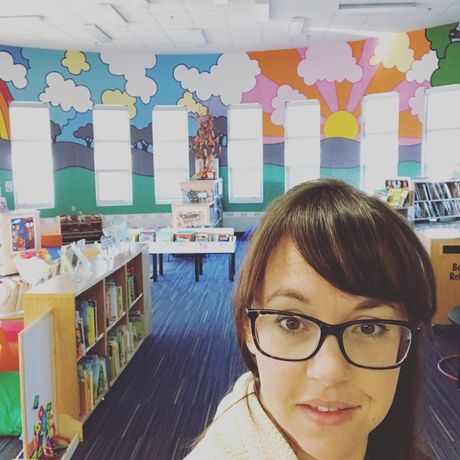
Beth Lyons is currently a teacher librarian in the Peel District School Board. She reflects and shares about her own learning journey as an educator and a teacher-librarian on her blog The Librarian’s Journey and on Twitter (@MrsLyonsLibrary). Currently, Beth is serving as OSLA vice-president, is a contributor to both The Teaching Librarian Magazine and the Canadian School Libraries Journal, and is one of the co-hosts for the podcast Read Into This (@into_read).
